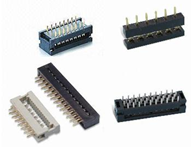The function of the cylinder is to provide the pressure space required for the process. It is one of the most important pressure components of the pressure vessel, and its inner diameter and volume often need to be determined by process calculation. Cylindrical cylinders (ie cylinders) and spherical cylinders are the most commonly used cylinder structures in engineering.
When the diameter of the cylinder is small (generally less than 500mm), the cylinder can be made of seamless steel pipe. At this time, there is no longitudinal weld on the cylinder; when the diameter is large, the steel plate can be rolled into a cylinder on the coiling machine or used in a hydraulic press. The upper half is pressed into two semi-cylinders, and the two are welded together by a weld to form a complete cylinder. Since the direction of the weld is parallel to the longitudinal direction (ie, the axial direction) of the cylinder, it is called a longitudinal weld, or simply a longitudinal weld. If the diameter of the container is not very large, there is generally only one longitudinal weld; as the diameter of the container increases, there may be two or more longitudinal welds due to the size of the steel sheet. In addition, the shorter length of the container can be directly connected to the ends of a cylinder to form a closed pressure space, thus forming a pressure vessel casing. However, when the container is long, due to the limitation of the size of the steel sheet, it is necessary to first weld the steel sheet into several cylinders (a certain cylinder is called a cylinder section), and then two or more cylinder sections. The assembly is welded to a cylinder of the desired length. The joint weld between the barrel section and the barrel section and between the barrel and the end head is called a circumferential weld, which is called a ring weld, because its direction is perpendicular to the axial direction of the cylinder.
Antenk dip plug connector Insulation Displacement termination connectors are designed to quickly and effectively terminate Flat Cable in a wide variety of applications. The IDC termination style has migrated and been implemented into a wide range of connector styles because of its reliability and ease of use. Click on the appropriate sub section below depending on connector or application of choice.the pitch range from 1.27mm,2.0mm, and 2.54mm here.

IDC DIP Plug Connectors Key Specifications/Special Features:
Materials:
Insulator: PBT, glass reinforced, rated UL94V-0
Contact: phosphor bronze or brass
Electrical specifications:
Pitch: 1.27/2.0/2.54mm
Current rating: 1A, 250V AC
Contact resistance: 30M Ohms (maximum)
Insulation resistance: 3,000M Ohms, minute
Dielectric withstanding voltage: 500V AC for one minute
Operating temperature: -40 to +105 degrees Celsius
Terminated with 1.27mm pitch flat ribbon cable
Number of contacts: 06,08, 10, 12, 14, 16, 20, 24, 26, 30, 32,34, 40, 50, 60 and 64P
With RoHS mark
Used for ribbon cables
DIP Plug Connectors Application
Wire to Board
Apply to Industries : PC, IPC, Consumer Electronics, Automotive, Home Appliance, Medical
Dip Connector,Dip Plug Connector,Dip Direct Pulg Connector,IDC Plug Connector,Idc connector dip plug,1.27mm Dip Plug Connector,2.0mm Dip Plug Connector, and 2.54mm Dip Plug Connector
ShenZhen Antenk Electronics Co,Ltd , https://www.antenkelec.com